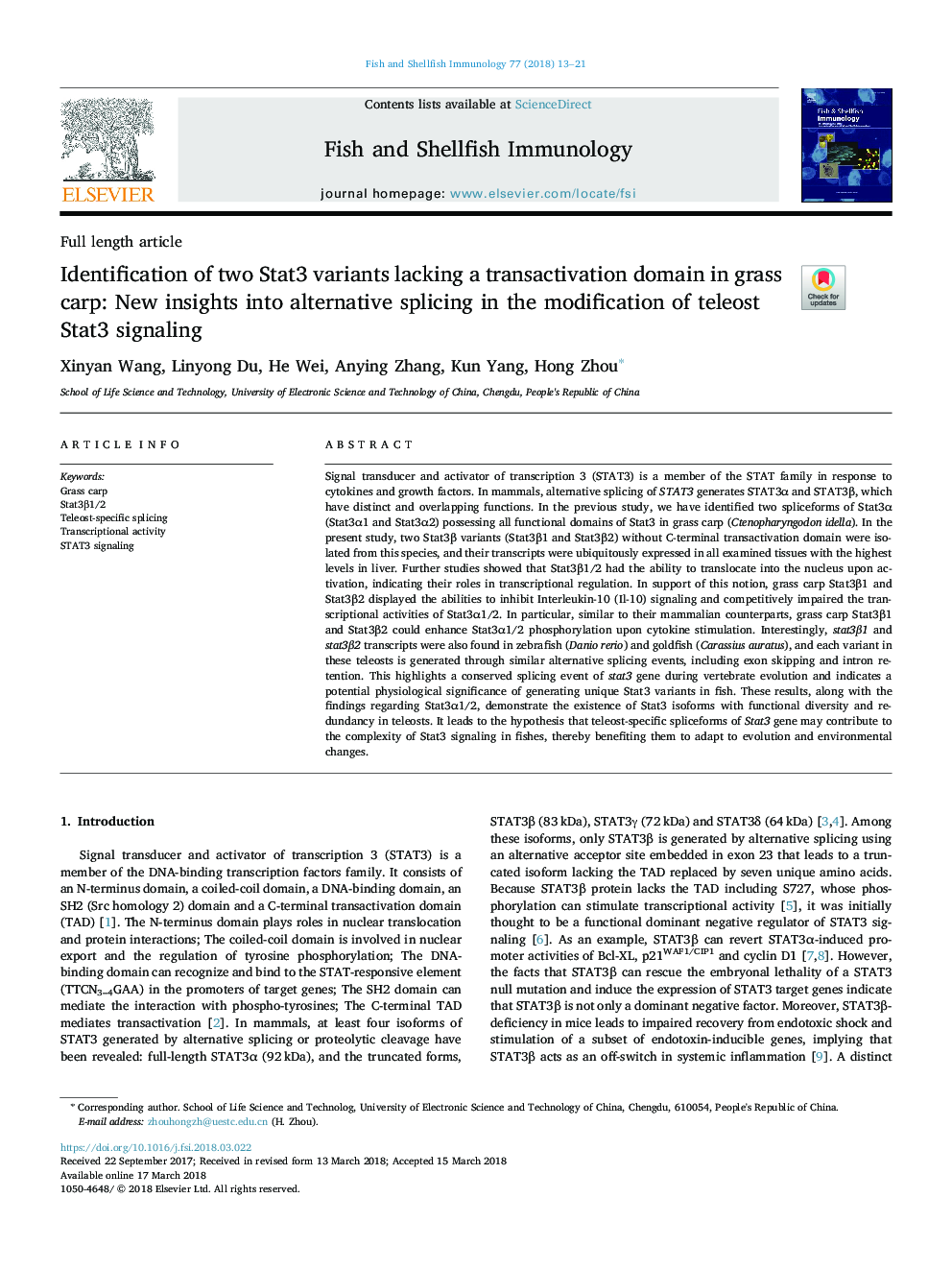| کد مقاله | کد نشریه | سال انتشار | مقاله انگلیسی | نسخه تمام متن |
|---|---|---|---|---|
| 8498423 | 1553597 | 2018 | 9 صفحه PDF | دانلود رایگان |
عنوان انگلیسی مقاله ISI
Identification of two Stat3 variants lacking a transactivation domain in grass carp: New insights into alternative splicing in the modification of teleost Stat3 signaling
دانلود مقاله + سفارش ترجمه
دانلود مقاله ISI انگلیسی
رایگان برای ایرانیان
کلمات کلیدی
موضوعات مرتبط
علوم زیستی و بیوفناوری
علوم کشاورزی و بیولوژیک
علوم آبزیان
پیش نمایش صفحه اول مقاله

چکیده انگلیسی
Signal transducer and activator of transcription 3 (STAT3) is a member of the STAT family in response to cytokines and growth factors. In mammals, alternative splicing of STAT3 generates STAT3α and STAT3β, which have distinct and overlapping functions. In the previous study, we have identified two spliceforms of Stat3α (Stat3α1 and Stat3α2) possessing all functional domains of Stat3 in grass carp (Ctenopharyngodon idella). In the present study, two Stat3β variants (Stat3β1 and Stat3β2) without C-terminal transactivation domain were isolated from this species, and their transcripts were ubiquitously expressed in all examined tissues with the highest levels in liver. Further studies showed that Stat3β1/2 had the ability to translocate into the nucleus upon activation, indicating their roles in transcriptional regulation. In support of this notion, grass carp Stat3β1 and Stat3β2 displayed the abilities to inhibit Interleukin-10 (Il-10) signaling and competitively impaired the transcriptional activities of Stat3α1/2. In particular, similar to their mammalian counterparts, grass carp Stat3β1 and Stat3β2 could enhance Stat3α1/2 phosphorylation upon cytokine stimulation. Interestingly, stat3β1 and stat3β2 transcripts were also found in zebrafish (Danio rerio) and goldfish (Carassius auratus), and each variant in these teleosts is generated through similar alternative splicing events, including exon skipping and intron retention. This highlights a conserved splicing event of stat3 gene during vertebrate evolution and indicates a potential physiological significance of generating unique Stat3 variants in fish. These results, along with the findings regarding Stat3α1/2, demonstrate the existence of Stat3 isoforms with functional diversity and redundancy in teleosts. It leads to the hypothesis that teleost-specific spliceforms of Stat3 gene may contribute to the complexity of Stat3 signaling in fishes, thereby benefiting them to adapt to evolution and environmental changes.
ناشر
Database: Elsevier - ScienceDirect (ساینس دایرکت)
Journal: Fish & Shellfish Immunology - Volume 77, June 2018, Pages 13-21
Journal: Fish & Shellfish Immunology - Volume 77, June 2018, Pages 13-21
نویسندگان
Xinyan Wang, Linyong Du, He Wei, Anying Zhang, Kun Yang, Hong Zhou,